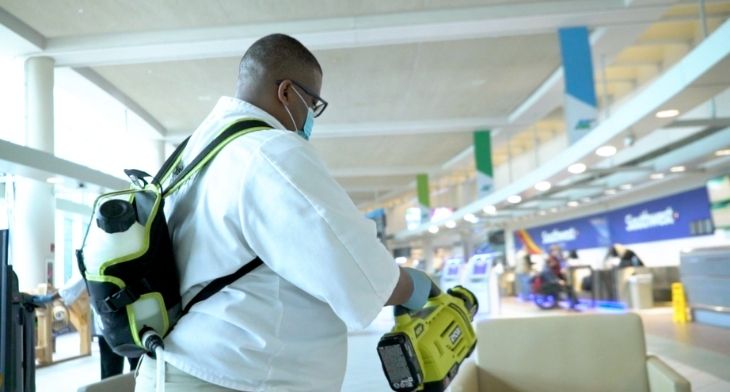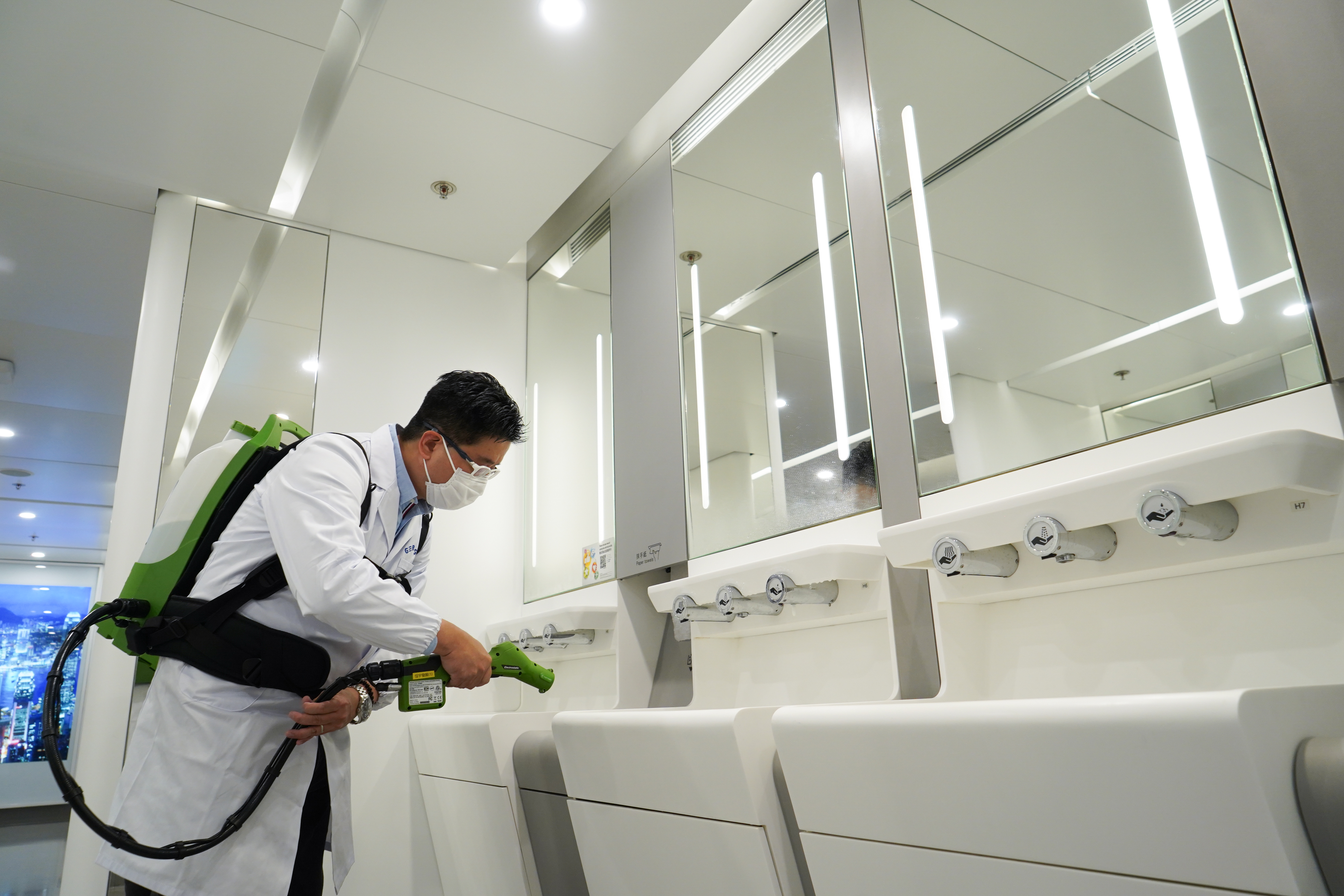


Face to face with the future of flying
Although the impact and effects of the COVID-19 pandemic continue to result in catastrophic predictions for air traffic and revenue losses for airports around the world, there is a definite sense that we are moving into the next phase of responding to the disease – taking decisive action to prepare for the rebound.
As countries across the globe start to gently ease their lockdown restrictions, airports are exploring measures they can adopt to reduce the potential spread of coronavirus. At Ontario Airport (ONT) officials are advising passengers to wear face coverings and use common-sense measures such as washing hands with soap and water regularly and avoid touching their faces to help prevent the spread of the virus. In addition, the airport is also spraying every surface of the airport nightly with a highly effective disinfectant using a cordless electrostatic backpack sprayer. It allows the disinfectant spray to attract to the surface, rather than float in the air, bringing 360-degree disinfection and sanitising capabilities.
“We are doing everything in our power to maintain ONT during this national emergency and we will be ready for a return to full operations as state and county governments ease safer-at-home orders,” said Atif Elkadi, Deputy CEO, ONT.
Meanwhile, Hong Kong has become the first airport to trial a full-body disinfection chamber. The airport is also conducting a pilot test of applying an antimicrobial coating on all passenger facilities and high-touch surface areas in the terminal. And both Bournemouth Airport in the UK and Paine Field Passenger Terminal in Washington are looking at the use of fever detection technology to identify passengers with high temperatures and determine whether they are fit to fly.
Chinese-based technology and innovations company, KC Wearable, has developed a smart helmet (pictured) for screening fevers in public spaces, that’s ideally suited to the airport environment. It can scan up to 13 people at once and 200 people in a minute.
Airports are certainly facing up to the challenge of ensuring the health and safety of all those passing through their doors. But Vilnius Airport in Lithuania has adopted a different tactic altogether. Ensuring that social distancing measures are adhered to and passenger numbers are restricted, it’s innovating in a different way by hosting a drive-through cinema on the airport apron in the absence of commercial passenger traffic. It’s the first time the tarmac space has been used for anything other than the parking, refuelling and boarding of aircraft and is all part of the Vilnius International Film Festival, which runs until the end of May.
Fly-through cinema. I hope it doesn’t catch on!
Have a safe weekend,
Chloë Greenbank, Regional Gateway Editor.
If you do not currently receive our email updates, you can subscribe here.






